-
Car Reviews
- All reviews
- Midsize SUVs
- Small cars
- Utes
- Small SUVs
- Large SUVs
- Large cars
- Sports SUVs
- Sports cars
- Vans
Latest reviews
- Car News
-
Car Comparisons
Latest comparisons
- Chasing Deals
The Chinese manufacturer is making a big bet that plug-in hybrid power represents the future of the large 4WD segment — and first impressions are fairly positive
The real purpose of GWM’s decision to lob a plug-in hybrid (PHEV) version of its cut-price Prado-rivalling Tank 500 four-wheel drive into the Australian market for $79,990 driveaway will become clear in the next year or two.
Already available locally with a ‘plugless’ petrol/hybrid (HEV) drivetrain (from $64,490 d/a), the Tank 500 PHEV adds more power and torque, around 100km electric driving range, and the ability to power external appliances from its battery while retaining true 4WD and 3000kg towing—all convenient ‘nice to haves’.
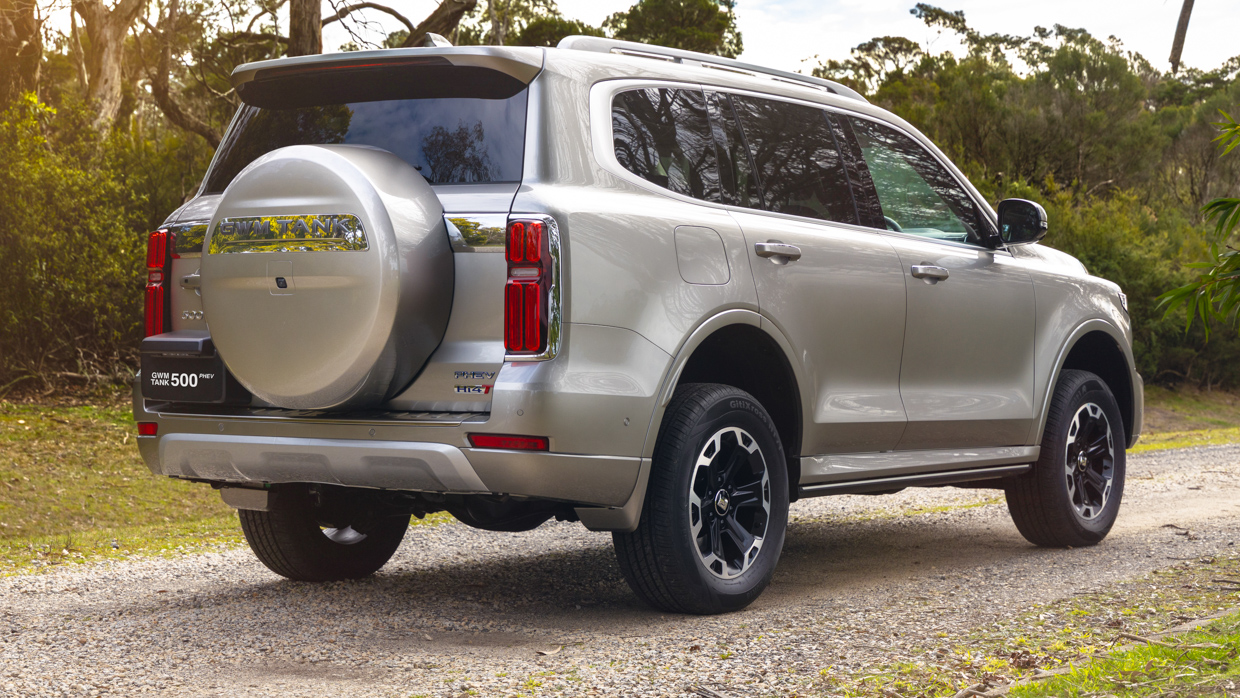
But all of those attributes are secondary to the fact the Tank 500 PHEV is designed to not just comply with Australia’s new vehicle emissions laws and avoid carbon penalties — but to generate such little CO2 (on paper) that the plug-in Tank 500 earns carbon credits!
These new emissions laws, dubbed NVES, will be financially punishing for carmakers that sell too many petrol/diesel vehicles, and not enough EVs and PHEVs. The likes of Toyota, Ford and Isuzu are all in that situation. One obvious way to pay off NVES fines for carmakers that receive them is to increase vehicle pricing.
Hence GWM’s big, early bet on PHEVs, even in heavy-duty segments like this. While rivals work out their NVES strategy, this Chinese brand is hoping to coax buyers into PHEVs right now, banking carbon credits and keeping prices lower than rivals — in theory.
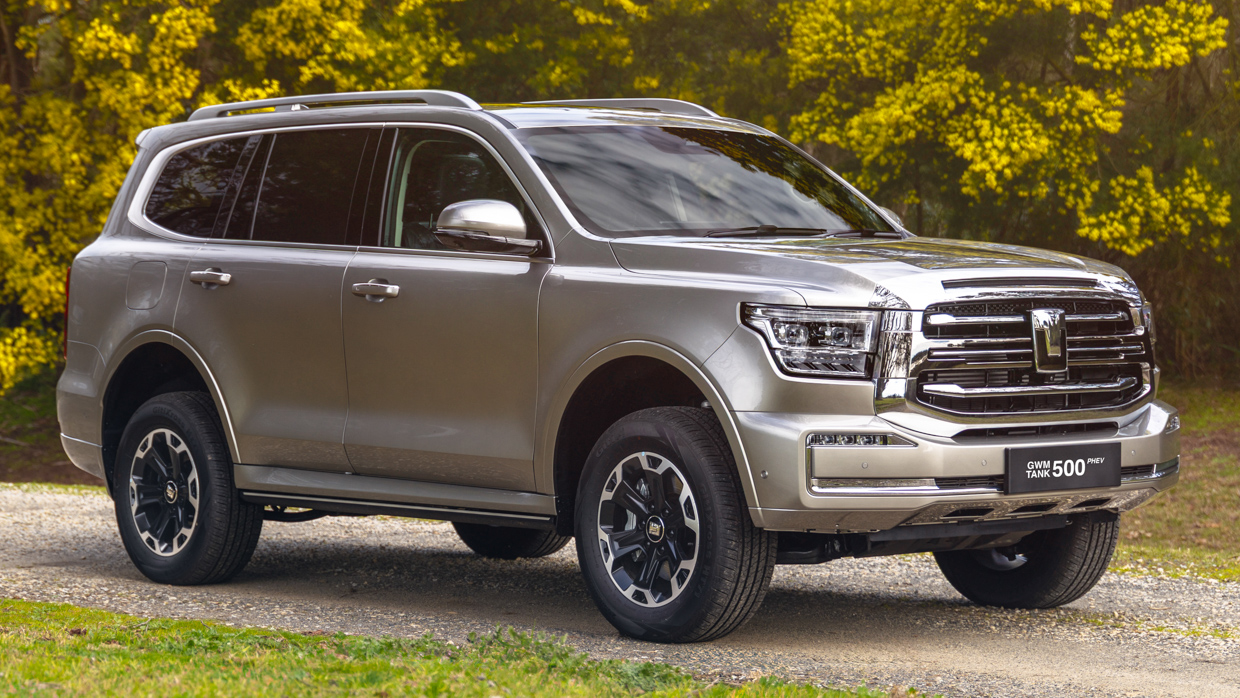
Available only in high spec ‘Ultra’ trim, the Tank 500 PHEV initially looks to be off to a good start. Producing 300kW of combined power and lavished with massaging, heated, cooled nappa leather among other toys, its sub-$80,000 on-road price means it costs little more than a cloth-trimmed, base diesel Toyota Land Cruiser Prado GX.
At Ultra level, other standard kit takes in 18-inch alloys (with a PHEV-specific design), LED exterior lighting, side steps, panoramic opening sunroof with shade, 12-speaker Infinity stereo, 14.6-inch touchscreen, head-up display, wireless charger, ambient lighting, acoustic glass and keyless entry.
However, it’ll take more than eye-opening pricing to convince Australians to give new-world hybrid tech a chance in the 4WD class, and the regular Tank 500 HEV is currently struggling — generating just 1117 sales year-to-date, compared to over 21,000 Prados.
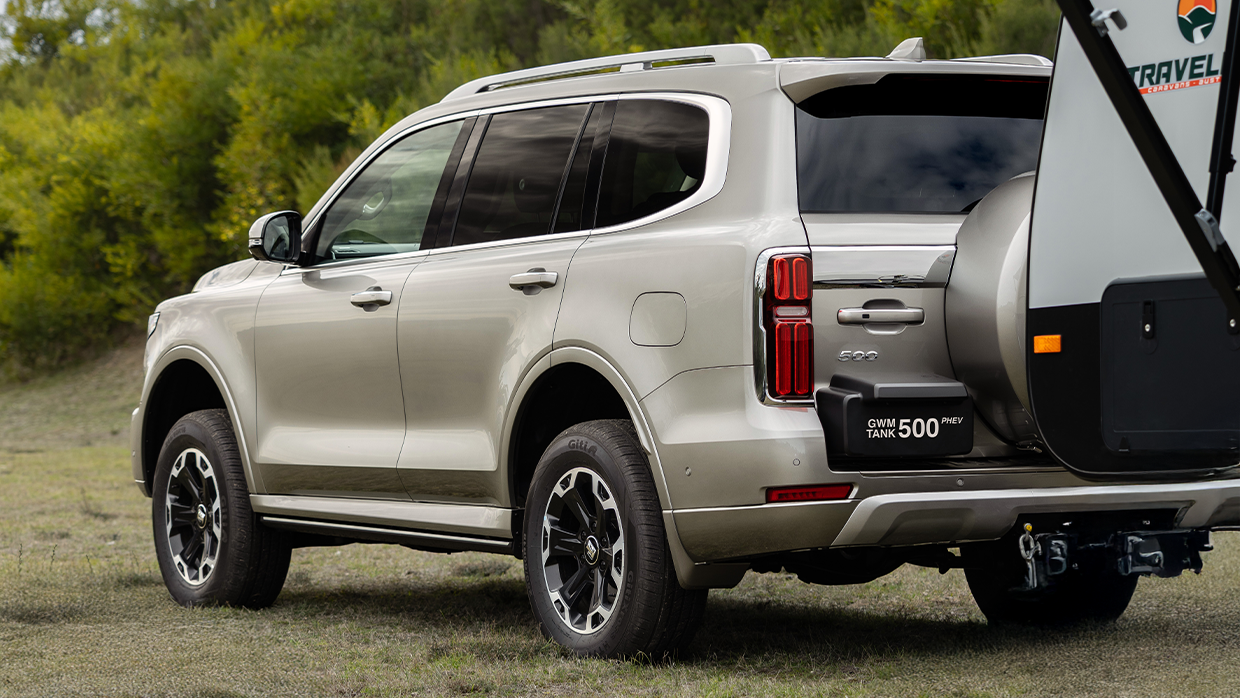
That is a massive gulf, but senior insiders suggest they expect the pricing of rivals like the Prado, Everest and MU-X will simply have to increase, leaving the lushly specified Tank 500 looking like better-and-better value over time.
GWM Australia was able to choose between two very different versions of the Tank 500 PHEV. The choice was made for the heavy-duty ‘Hi4-T’ configuration that retains mechanical 4WD system with dual-range transfer case and electric-locking front and rear differentials. While it has an electric motor, this comes before the nine-speed transmission.
Overseas, a road-focused ‘Hi4-Z’ version of the Tank 500 is also available. This iteration has a bigger hybrid battery, double the electric range, and double the power — but it dispenses with true 4WD in favour of dual-motor electric AWD. Expect to see Hi4-Z come to Australia in future, but not in a Land Cruiser rival.
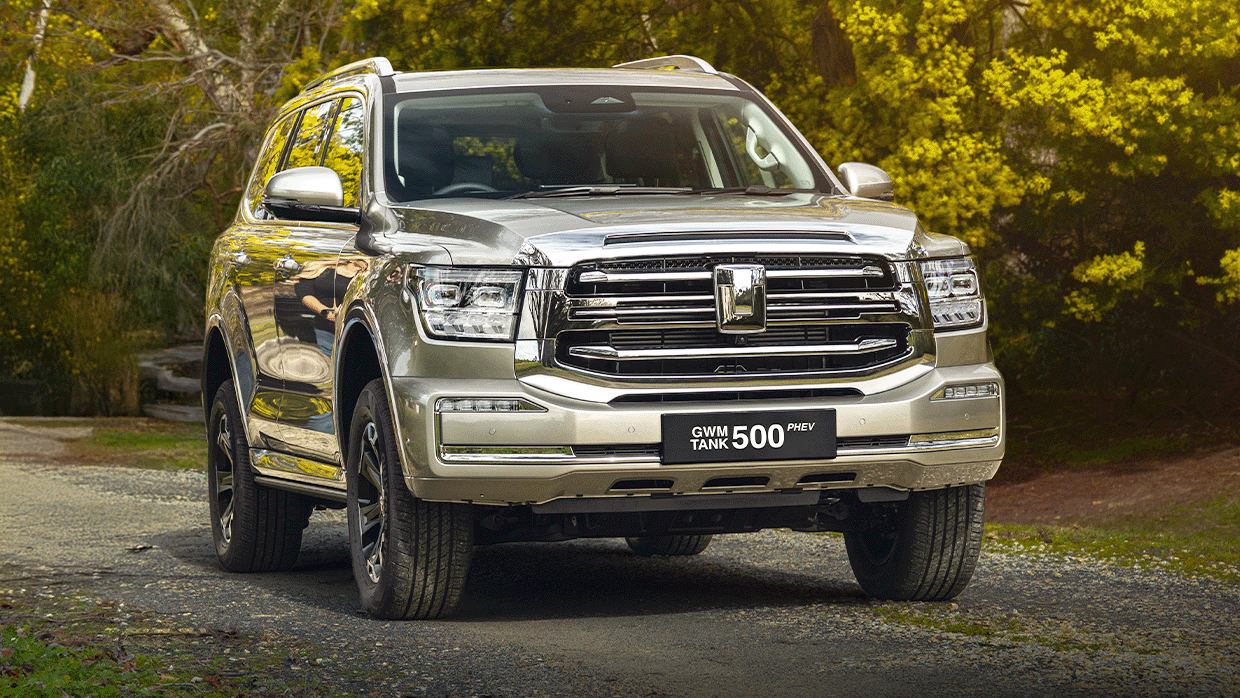
GWM believes the Tank 500 PHEV will have more ‘cred’ if it can tow with consistent performance (it’s rated for 3000kg braked) and go further off-road, meaning the PHEV system mostly adds to the car’s capability rather than detracting from it.
On the road, the driving experience of the PHEV is much like the regular Tank 500 hybrid — but with fewer hiccups from the powertrain thanks to superior calibration.
The standard hybrid and the PHEV share the same 180kW/380Nm 2.0-litre turbo petrol four-cylinder engine, but the PHEV gets a considerably more powerful 120kW/400Nm electric motor (instead of 78kW/268Nm) sandwiched between the petrol and the transmission.
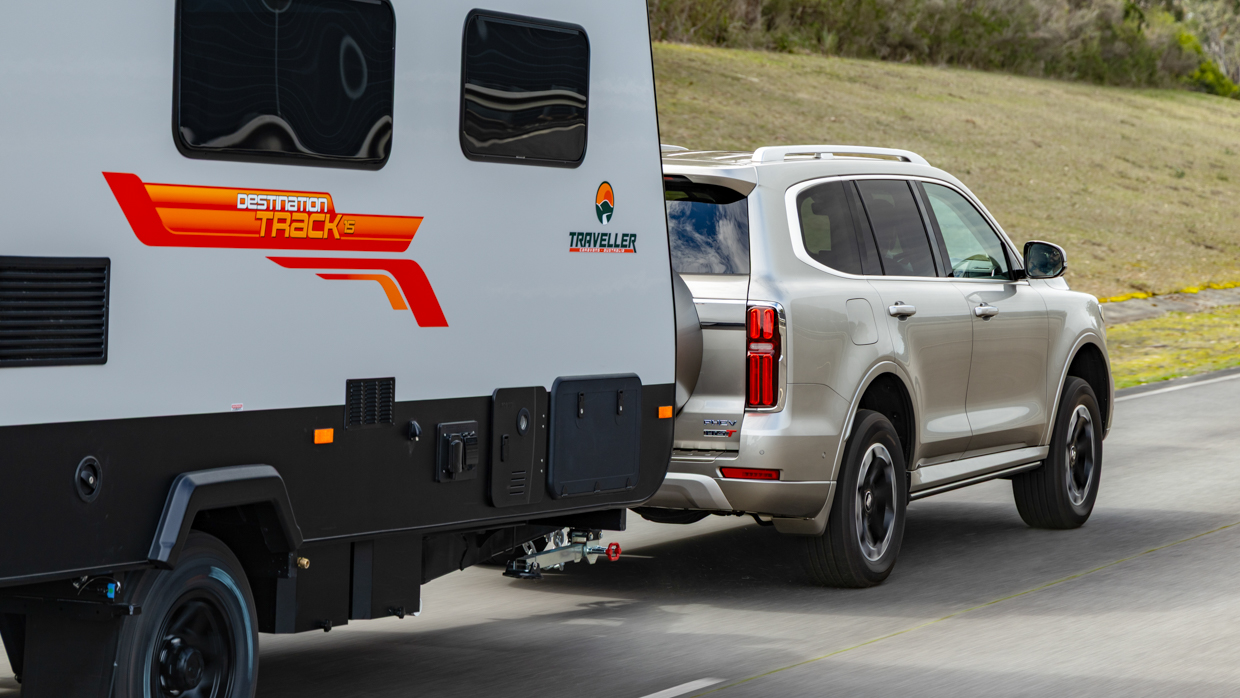
That upgrade takes combined power to 300kW/750Nm for the PHEV — a noticeable lift over the 255kW/648Nm claims of the hybrid. That’s good enough to slash the 0-100km/h run to 6.9 seconds (claimed), down about 1.5 seconds.
A key problem the regular Tank 500 hybrid is that power delivery is very inconsistent, because the battery is too small to keep the powertrain supplied with sufficient electric power to supplement the relatively modest petrol engine.
That is less of an issue in the PHEV because the battery management system keeps more charge in reserve — allowing the plug-in Tank 500 to deploy more of its total combined power, more of the time.
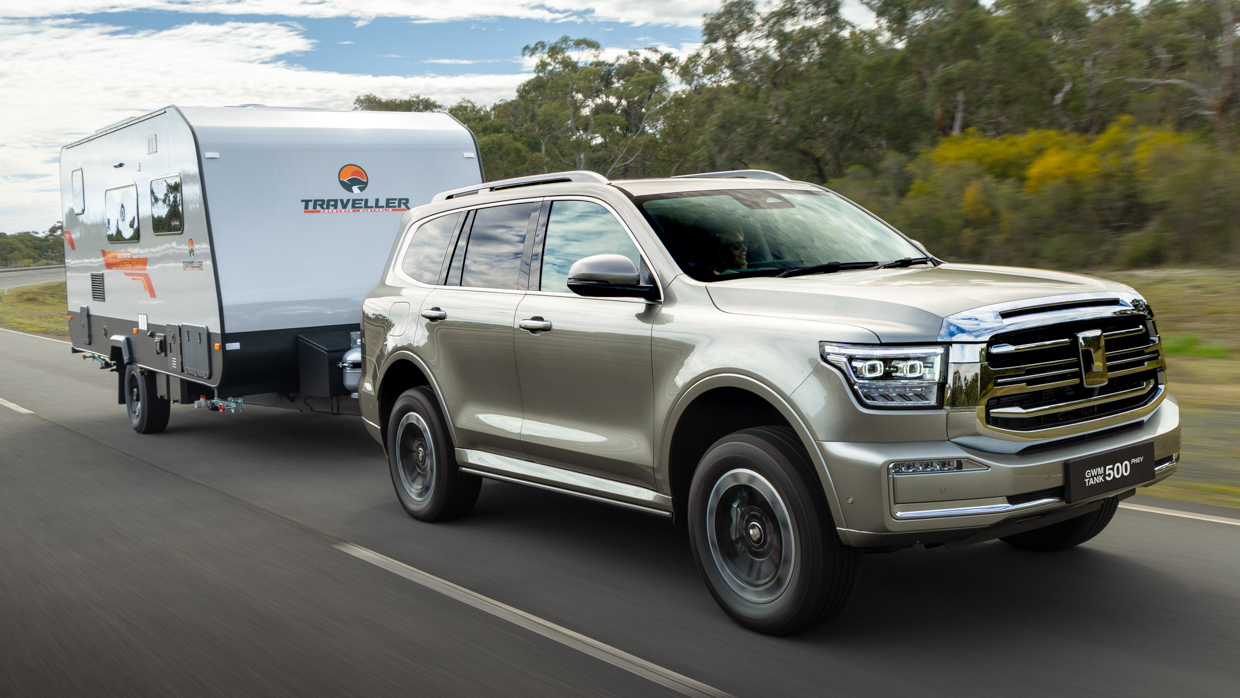
Getting the best of the PHEV powertrain will still require charging it up, however. Do so and you can extract all that combined power, or alternatively, run the Tank 500 PHEV on battery power alone for around 102km (WLTP est).
The EV-only range equates to efficiency of 36kWh/100km … not great, but still cheaper than running on petrol if you can charge at home. Once the battery is exhausted (with only a mandatory buffer remaining), fuel consumption sits around 10.0L/100km, being slightly better than the regular hybrid model.
Our initial testing loop occurred at the Lang Lang Proving Ground where GWM has established a steering and suspension tuning operation to localise the ride and handling of the models it sells in Australia. The Tank 500 hasn’t been adjusted yet.
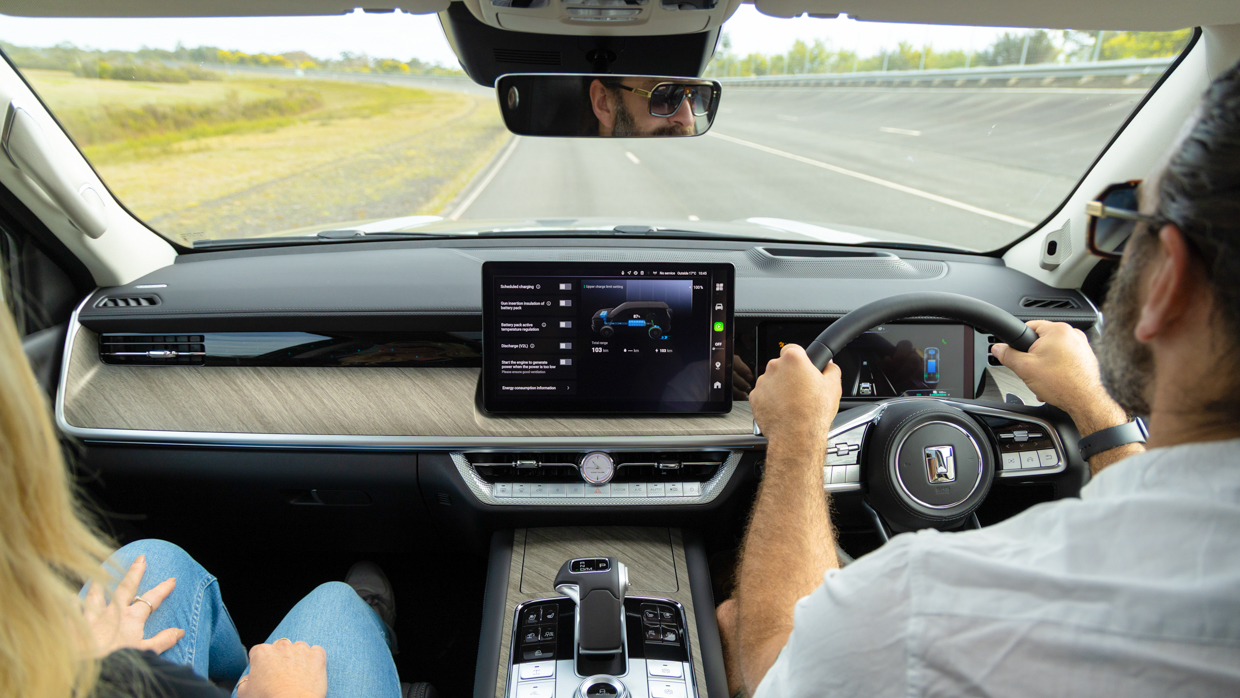
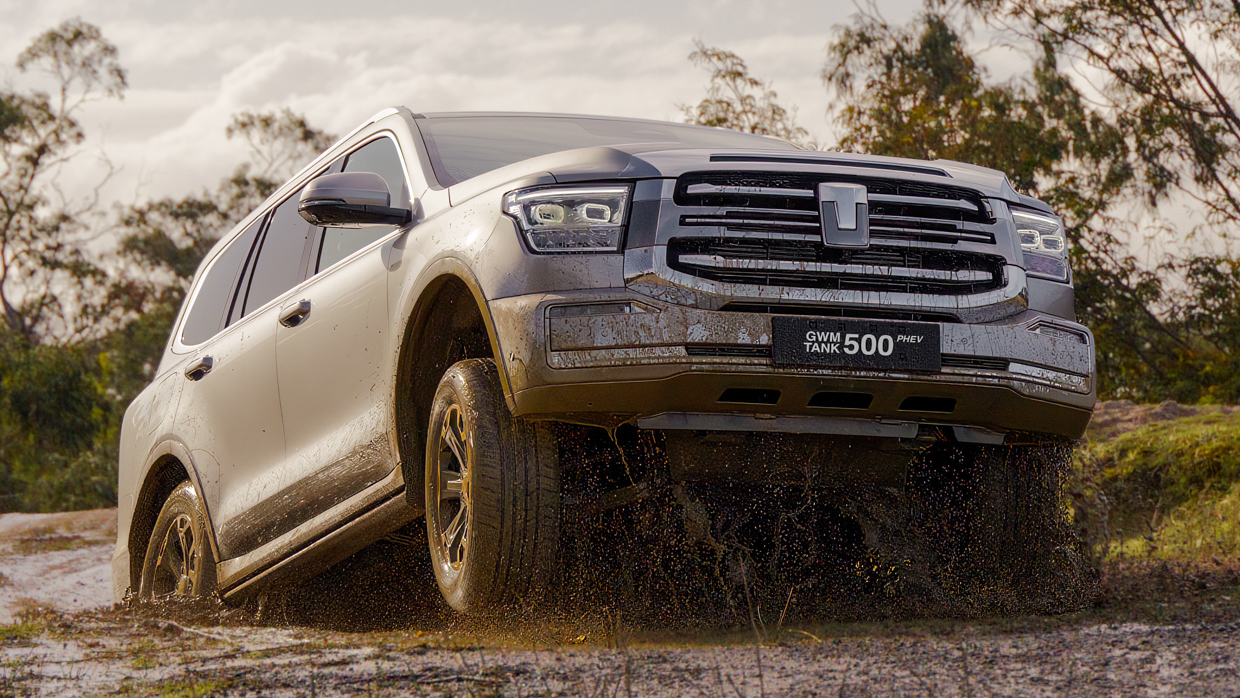
Lang Lang gave us the opportunity to drive the Tank 500 PHEV off-road and on a near-perfect simulation of Australian country roads. Both scenarios showed off a powertrain that feels muscular, refined and smooth, if not outrageously fast, as the plug-in weighs 2775kg!
The off-road course’s gnarly descents challenged the Tank 500’s 24-degree departure angle beyond its limits, causing some damage, but otherwise progress was smooth. Keep in mind, though, the PHEV appears to reduce ground clearance marginally, from 224mm to 213mm.
What we couldn’t test was towing. GWM says it chose Hi4-T partially because it allows for consistent towing performance no matter the state of charge, but we’d be keen to see how the system holds up on long uphill stretches — as the 180kW/380Nm petrol engine’s outputs may start to feel stretched here. We’ll see in future.
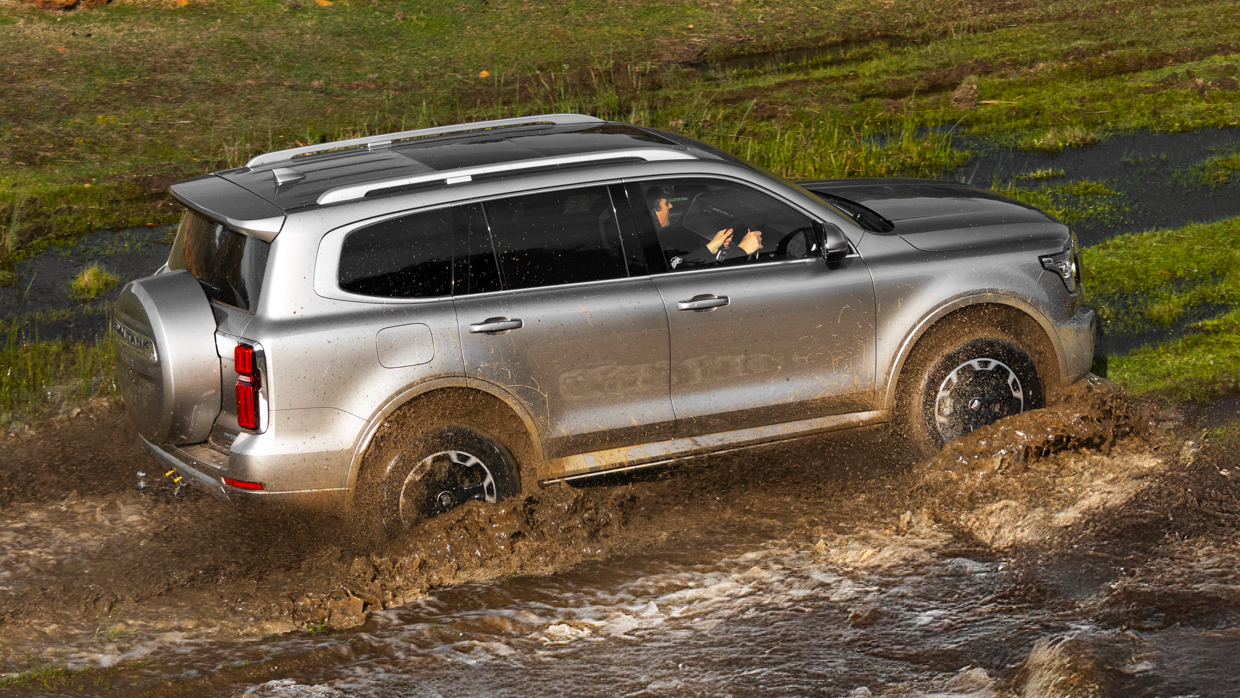
While the Tank 500’s ride and handling hasn’t received the same impressive local retune as the new GWM Haval H6 PHEV (tested on the same day), the big Tank starts from a higher base and doesn’t require an adjustment as urgently.
The slow steering could certainly do with a remap for more precision and feel, especially on-centre, but the soft and plush suspension tune arguably suits the laidback feel of this 4WD. Body control is a touch wayward but driven gracefully, the Tank 500 PHEV is relaxing.
We understand an Aussie rework of the shock absorbers and power steering is on the ‘to-do’ list for GWM’s dynamic engineers, led by ex-Holden guru Rob Trubiani.
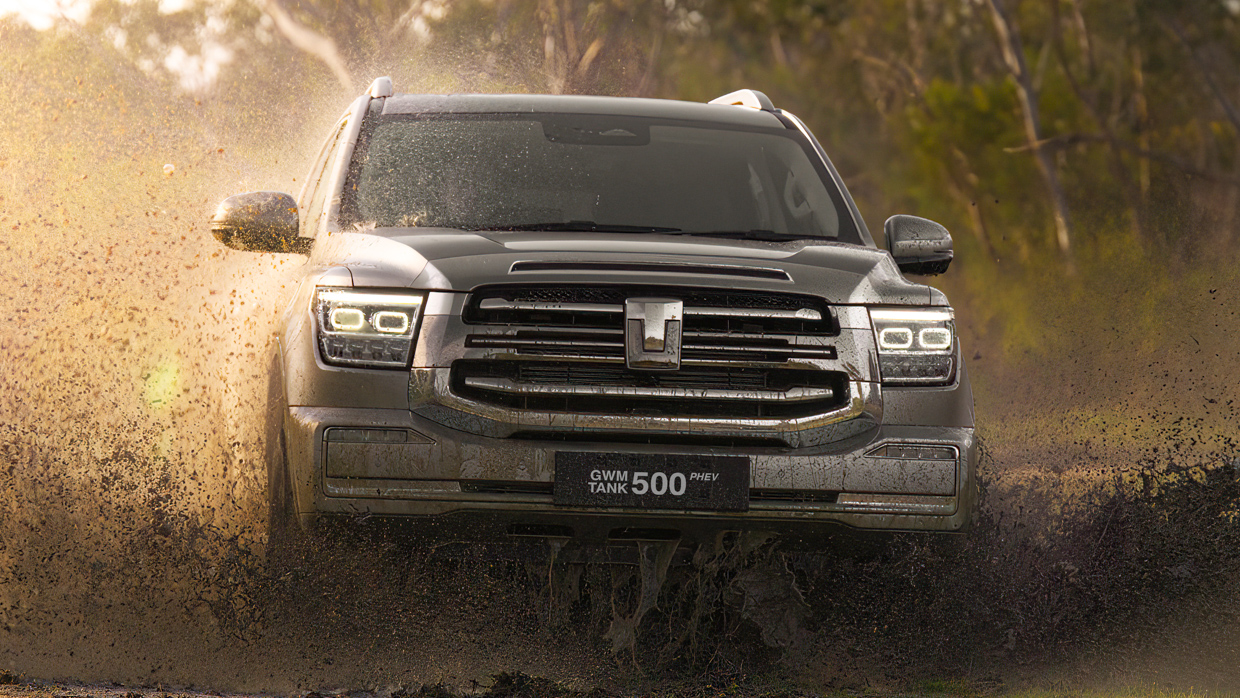
More finesse would also be appreciated from the safety systems. While the crisp 360-degree camera (with see-through mode) is very helpful, both the lane centring and driver fatigue detection systems are hypersensitive — and it’s a frustration to have to switch these off on every drive, as they come back on each time.
With two major exceptions, the cabin of the Tank 500 PHEV is identical to that of the standard Tank 500 hybrid in Ultra trim — meaning lashings of nappa leather, plenty of toys and some tech that initially seems sophisticated … but turns out to be a little unintuitive.
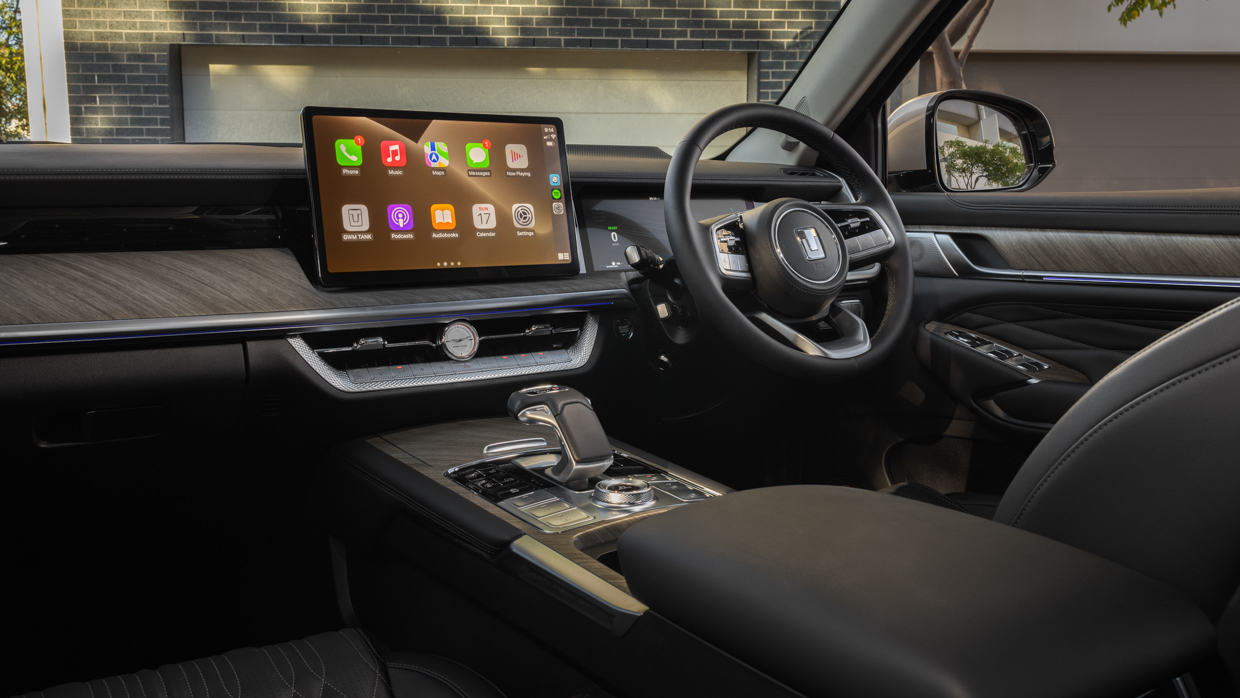
Those exceptions are that the PHEV’s larger battery has required the deletion of the regular Tank 500’s (well-packaged) third row — the plug-in is strictly a five-seater with a square-shaped 640-litre boot behind the second row, expanding to 1400L in two-seat mode.
The other big change is that second row comfort receives a big upgrade in the PHEV, which exclusively fits an executive-style back seat with a flip-down control console in place of a simple centre armrest.
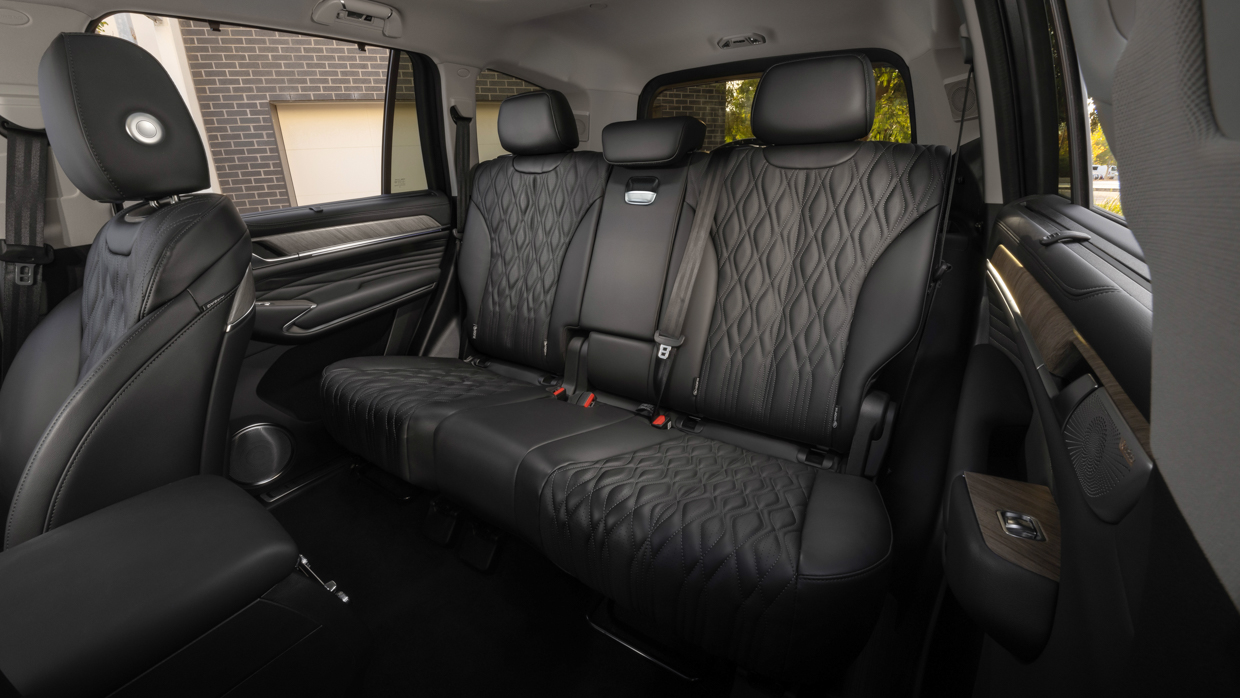
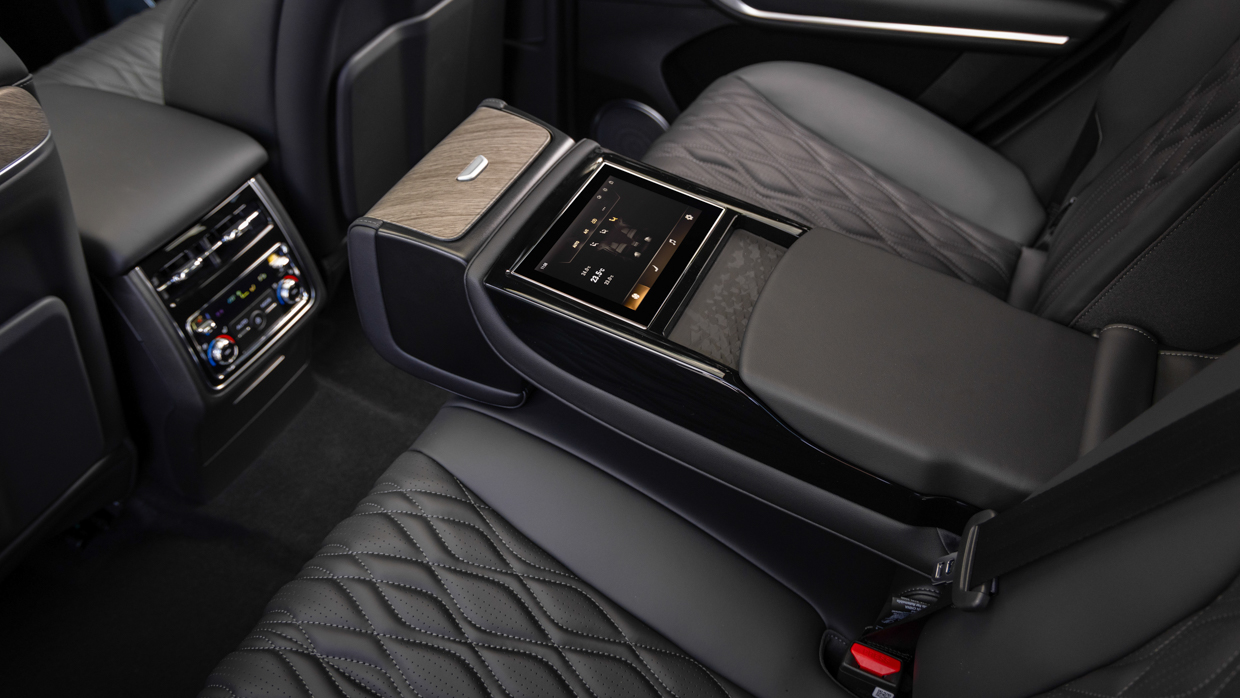
Instead, rear seat occupants get their own 7.0-inch touchscreen to control their heated, cooling, massaging outboard chairs — kids will be beside themselves playing with this! Back seat legroom and headroom is immense, and more spacious than any Prado.
Up front, comfort is decent. The Ultra-grade’s nappa-leather upholstery feels supple to the touch, with 12-way power-adjustment for the driver helping to achieve a solid driving position. The trim is black by default but an out-there cream/navy colour scheme is optional.
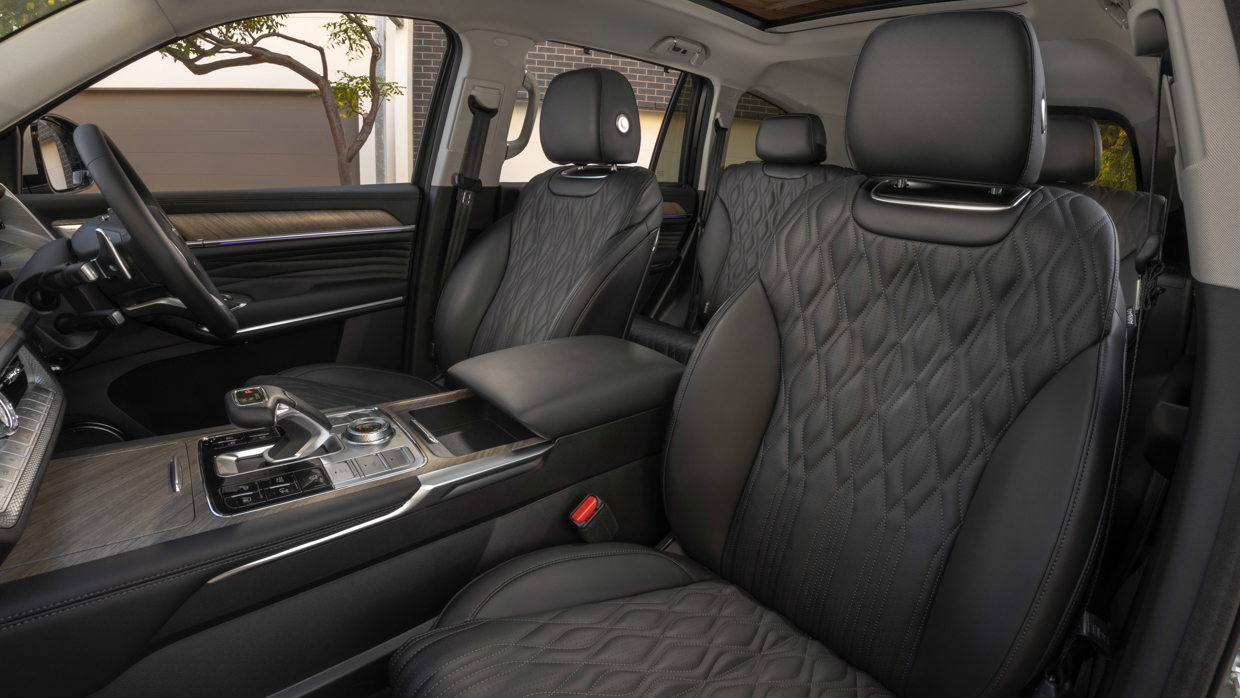
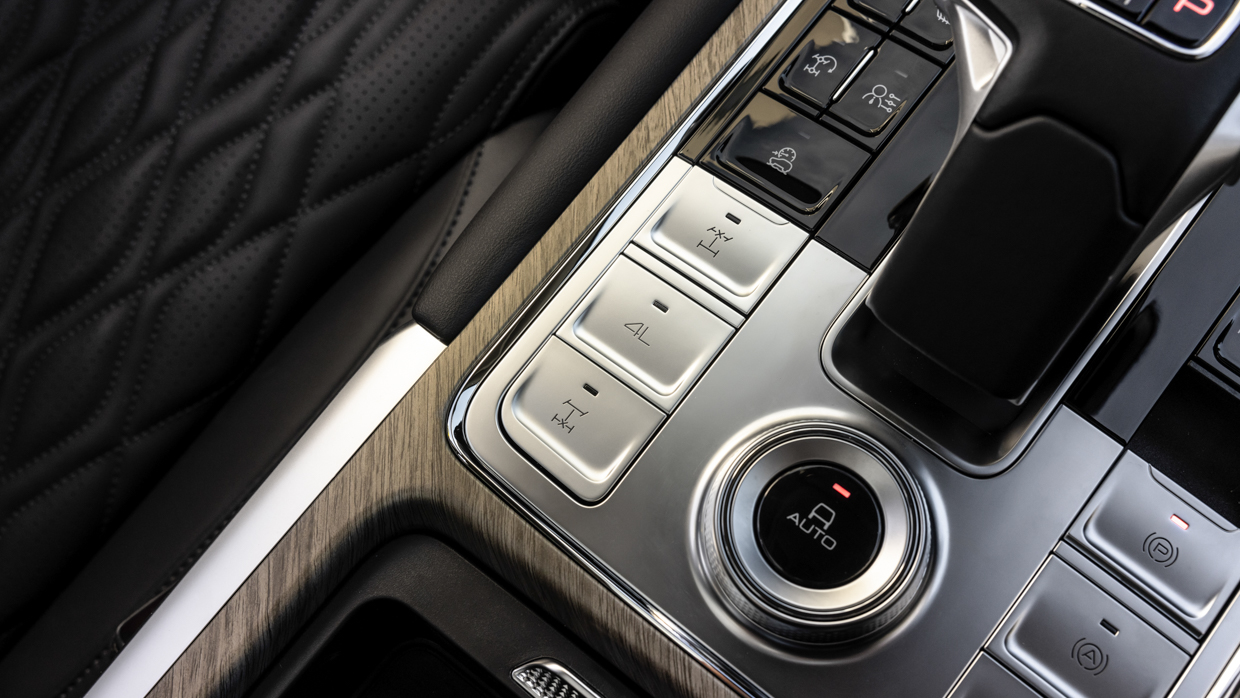
Sure, some of the secondary materials (from simulated wood to a few thinner veneers of soft-touch material) can look and feel slightly cheap but you have to remind yourself that the Tank 500 Ultra PHEV is only asking low-end Prado or mid-tier Everest money.
What needs more work is the cabin tech stack, and we expect this will be upgraded soon. GWM is in the early stages of rolling out its new ‘Coffee OS 3’ infotainment system, which bundles faster processing power with clearer screens and far more intuitive menus — meaning easier control of assistance and convenience features.
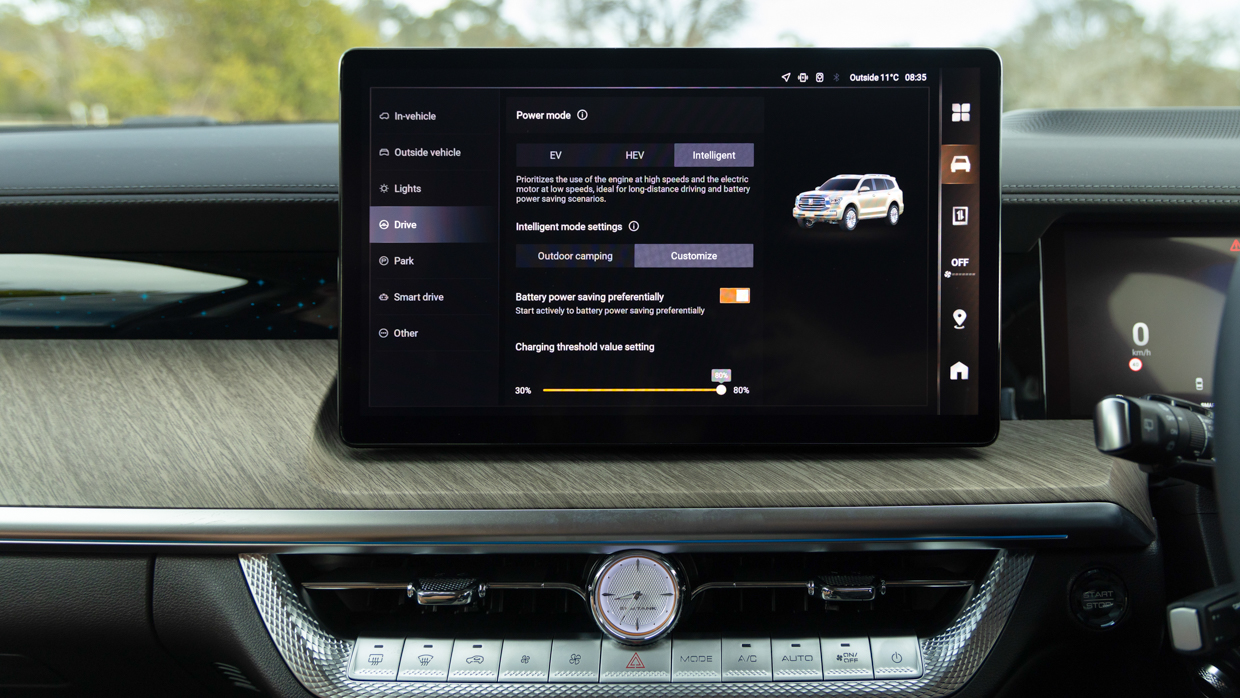
Because the Tank 500 hasn’t had its ‘Coffee’ upgrade yet, it soldiers on with an older, dimmer infotainment system that almost looks aftermarket. The 14.6-inch central touchscreen and 12-inch digital instrument cluster are large, but the fonts, colours and menus look amateurish.
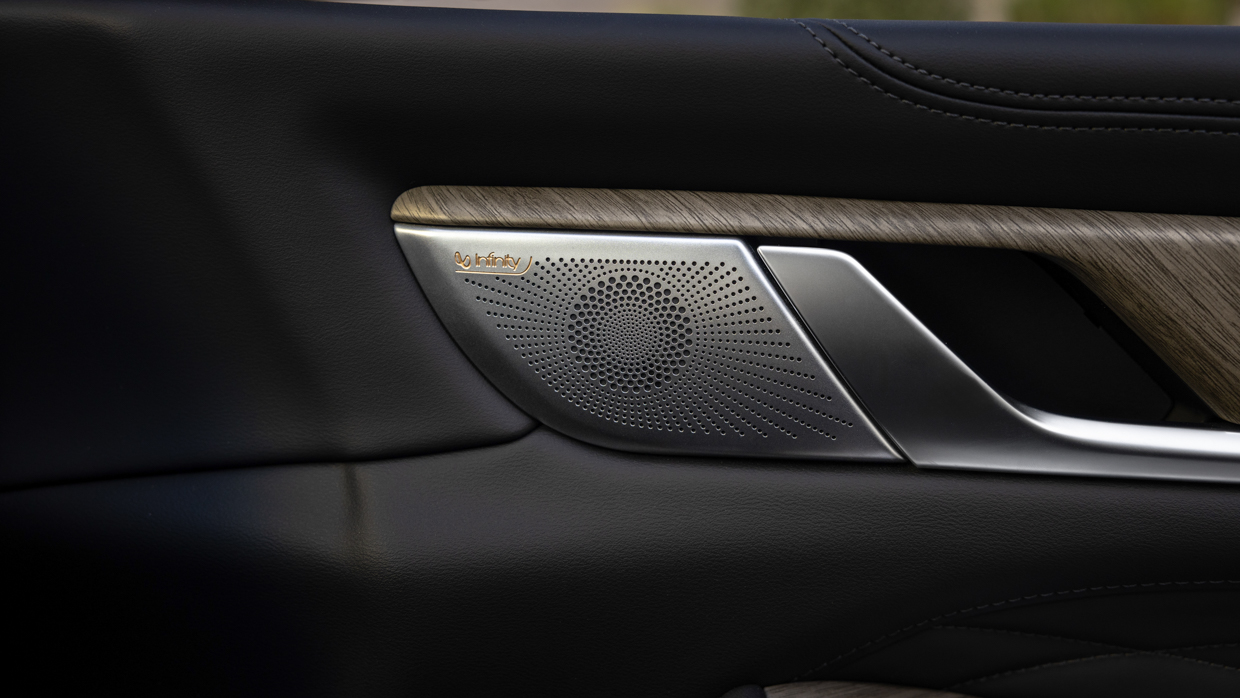
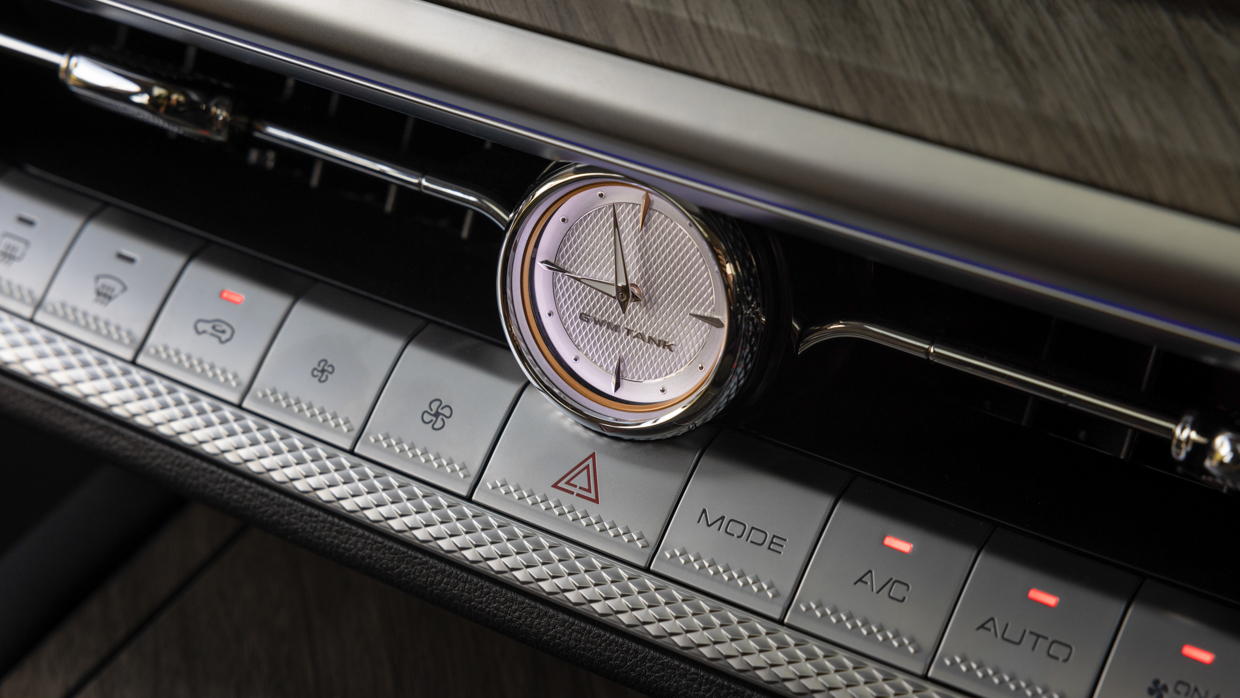
There are little annoyances like the fact that, to adjust any climate control item, you have to be kicked out of Apple CarPlay or Android Auto. The newer GWM system has a fixed air-con control panel.
What is appreciated is the standard inclusion of a connected car app for your smartphone that allows you to start the Tank 500’s climate control and see telematics data in real time.
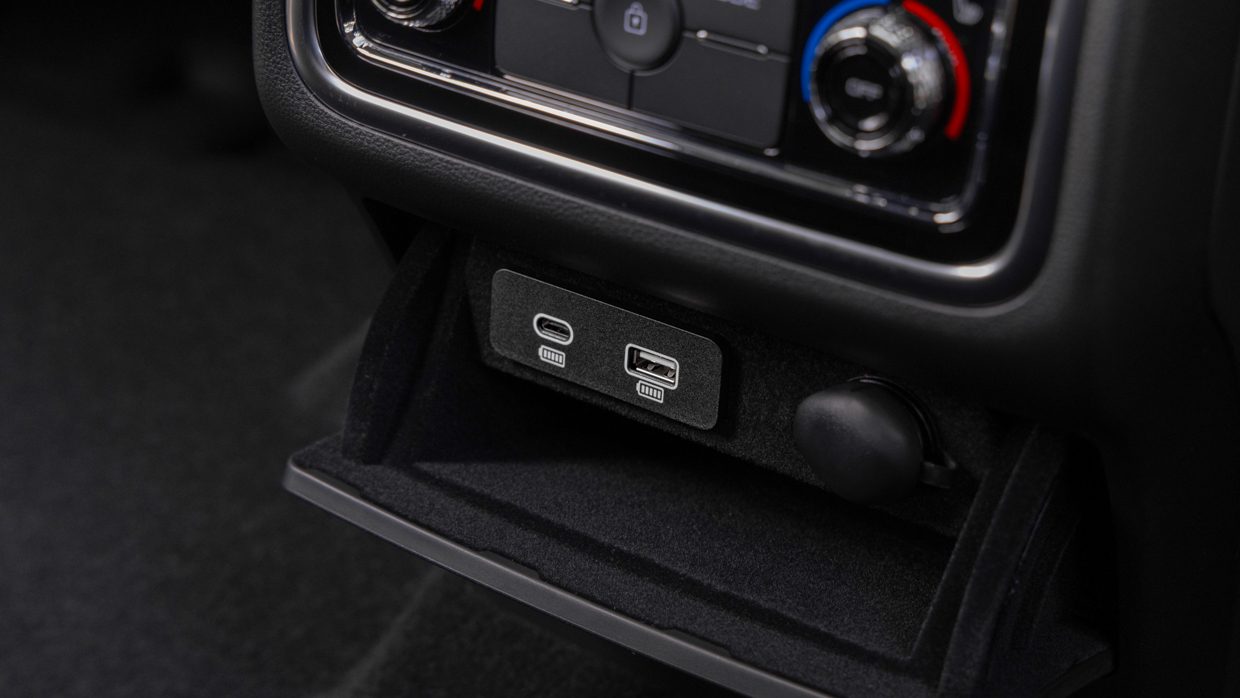
A further benefit of the PHEV that might initially be overlooked is the presence of a 6kW vehicle-to-load function. Appliances can be plugged into a standard power point, and in theory, the full load can be drawn for over six hours from a full battery charge.
GWM is moving quickly in Australia. The Chinese brand wants to rapidly increase market share, both by improving its products but also by seizing the initiative with vehicles that comply with Australia’s tough new emissions laws.
In theory, these laws should allow GWM to sell the Tank 500 PHEV more cheaply than the familiar diesels duking it out in the large 4WD segment. Toyota, Ford, Nissan, Isuzu — none have a hybrid ready for this segment. The Tank 500 now offers not one but two hybrid systems, both with seemingly little compromise.
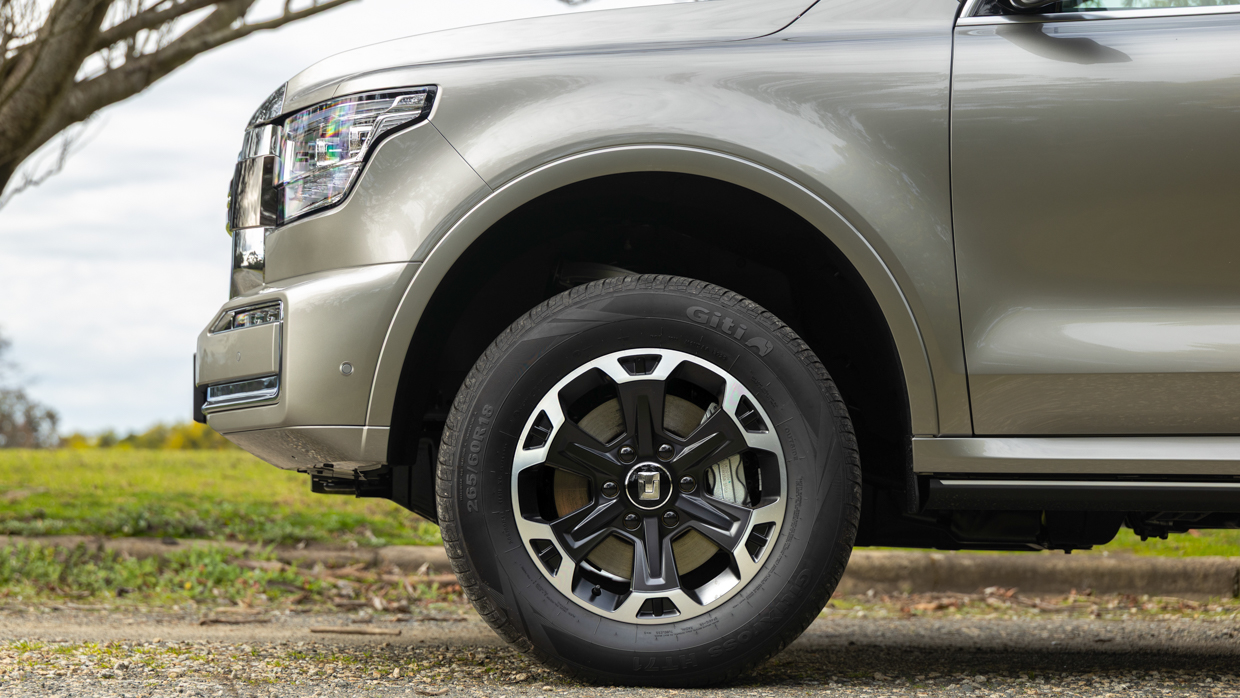
It’s very well to have well-priced, seemingly competent products ready to sell. Convincing Australians — particularly Aussies shopping in a segment that has not traditionally been interested in eco-conscious options — will require some novel marketing strategies. GWM says these campaigns will be revealed soon.
And moving this fast inevitably means that elements of the product can feel a touch underbaked. The Tank 500 PHEV arrives without an Aussie tune (for now) and without upgraded infotainment (for now). Both upgrades are likely to be worthwhile, and both could be justified reasons to wait for ‘version 2’.
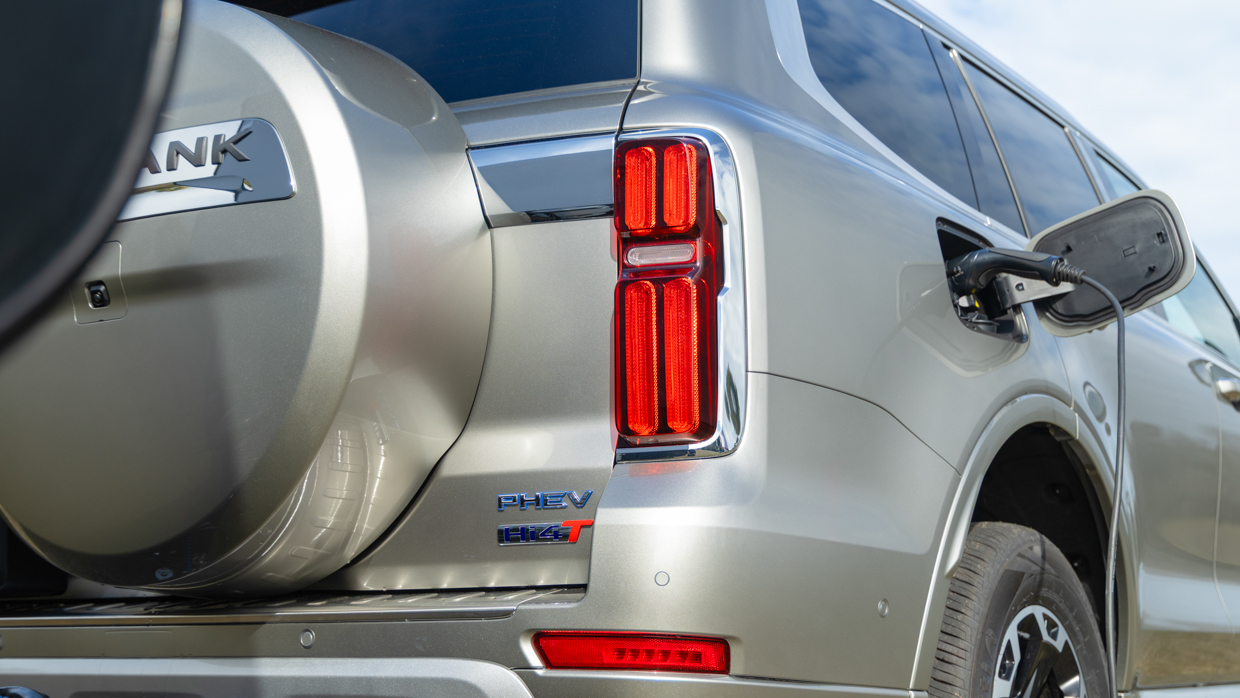
There is little doubt GWM is the cat amongst the pigeons in the large 4WD segment. Based on a first drive of the PHEV, we’re reasonably impressed. Next up will be a proper comparison to see the plug-in Tank compares outside the confines of the proving ground.
Key specs (as tested)
About Chasing cars
Chasing Cars reviews are 100% independent.
Because we are powered by Budget Direct Insurance, we don’t receive advertising or sales revenue from car manufacturers.
We’re truly independent – giving you Australia’s best car reviews.
The estimate provided does not take into account your personal circumstances but is intended to give a general indication of the cost of insurance, in order to obtain a complete quote, please visit www.budgetdirect.com.au. Estimate includes 15%^ online discount.
^Conditions Apply
Budget Direct Insurance arranged by Auto & General Services Pty Ltd ACN 003 617 909(AGS) AFSL 241 411, for and on behalf of the insurer, Auto & General Insurance Company Limited(ABN 42 111 586 353, AFSL 285 571).Because we don’t know your financial needs, we can’t advise you if this insurance will suit you. You should consider your needs and the Product Disclosure Statement before making a decision to buy insurance. Terms and conditions apply.
Indicative quote based on assumptions including postcode , 40 year old male with no offences, licence suspensions or claims in the last 5 years, a NCD Rating 1 and no younger drivers listed. White car, driven up to 10,000kms a year, unfinanced, with no modifications, factory options and/or non-standard accessories, private use only and garaged at night.
^Online Discounts Terms & Conditions
1. Discounts apply to the premium paid for a new Budget Direct Gold Comprehensive Car Insurance, Third Party Property Only or Third Party Property, Fire & Theft Insurance policy initiated online on or after 29 March 2017. Discounts do not apply to optional Roadside Assistance.
2. Discounts do not apply to any renewal offer of insurance.
3. Discounts only apply to the insurance portion of the premium. Discounts are applied before government charges, taxes, levies and fees, including instalment processing fees (as applicable). The full extent of discounts may therefore be impacted.
4. We reserve the right to change the offer without notice.